The list in brief1.Best Overall2.Best Mini LED3.Best OLED4.Best Premium5.Best Budget6.Best for Consoles7.Shopping Tips
As mainstream graphics cards become even more powerful, it’s not surprising that PC gamers are taking more of an interest in monitors with a 4K resolution. A panel packing 8.3 million pixels (3840 x 2160) makes your favorite games look sharp and realistic. However, that 4K resolution requires a graphics card capable of delivering high enough frame rates to make games playable.

In addition to being one of the most popular resolutions available in a good gaming monitor today, 4K also offers the ability to expand to larger displays while retaining a sharp image. With a packed pixel army, you can stretch your screen size well past 30 inches without having pixels so large that you can see them.
However, that image quality can often come at a steep price. Anyone looking for a4Kmonitor knows they’re not cheap. Yes, 4K is about high-res gaming (and other media), but you’ll still need solid gaming specs, like a 120 Hz-plus refresh rate, low response time, and your choice of Adaptive-Sync (Nvidia G-SyncorAMD FreeSync, depending on your system’s graphics card). And you can’t forget the cost of the powerful graphics card you’ll need to game properly in 4K. See ourBest Gaming Monitorspage for lower-resolution recommendations if you’re not ready to fully embrace 4K.
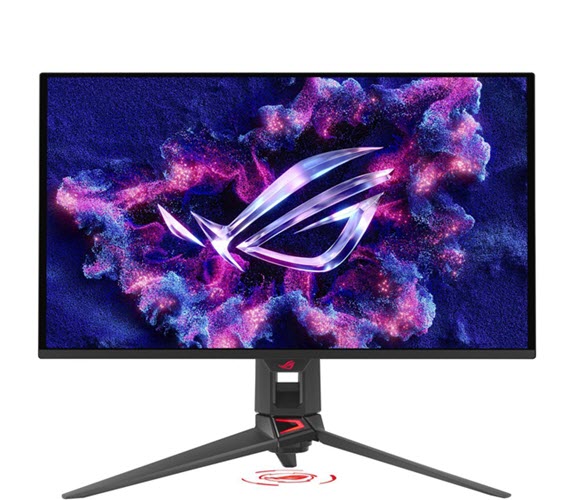
Our top overall pick is theAsus ROG Swift PG27UCDM, a 27-inch monitor capable of 240 Hz at 4K resolution. However, it’s not the only standout 4K monitor available today; let’s look at the other contenders.
Best Overall
Best 4K Gaming MonitorAsus has a winner on its hands with the PG27UCDM. It combines great looks with excellent performance and video processing. Even better, the QD-OLED panel results in image quality that IPS and VA panels just can’t match.
Read more below
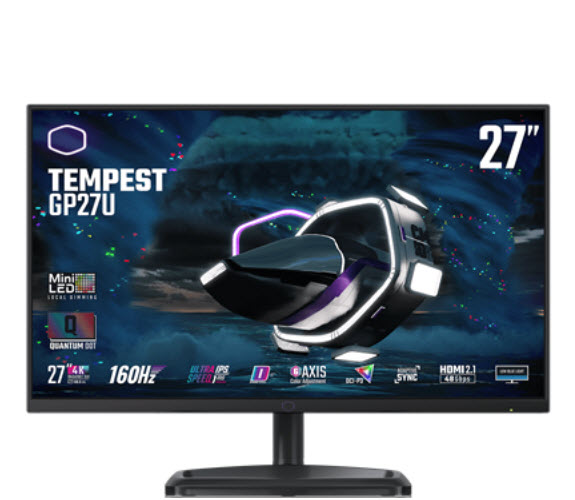
Best Mini LED
Best Mini LED 4K Gaming MonitorMini LED technology is increasingly emerging in the gaming monitor segment, and the Cooler Master Tempest GP27U is among the best available. The monitor features 576 dimming zones to improve contrast and contribute to a sharp and colorful image. And while 144Hz is the segment average for refresh rates at 144Hz, the Tempest GP27U bumps that to 160Hz (although you do lose Adaptive-Sync if you cross the 144Hz barrier).
Best OLED Gaming Monitor
The HP Omen 32 OLED takes on a dual personality with features and performance that make it appealing to both professionals and gamers alike. It offers a 32-inch 240Hz QD-OLED panel, feature-packed KVM, and sleek styling.
Best Premium
Best Premium 4K Gaming MonitorThe Asus ROG Swift OLED PG32UCDP is another dual-mode gaming monitor on our list, although this one is decidedly more premium. This OLED panel can operate at 240Hz at 4K or 480Hz at 1080p, making it one of the best-performing 4K options for gamers.
Best Budget
Best Budget 4K Gaming MonitorThe Asus ROG Strix XG27UCS has a street price of well under $500 and delivers solid performance, featuring a 160 Hz refresh rate, low response times, and accurate color out of the box.
Best 4K Gaming Monitor for Consoles
The Alienware AW3225QF has a 240Hz refresh rate, 4K resolution, Dolby Vision support, and a 32-inch QD-OLED panel. The monitor bathes you in inky blacks and brilliant colors, which is par for the course for OLED panels, and features a large color gamut.
Best 4K Gaming Monitors You Can Buy Today
Why you can trust Tom’s HardwareOur expert reviewers spend hours testing and comparing products and services so you can choose the best for you.Find out more about how we test.
Reasons to buy
Reasons to avoid
It’s impossible to be all things to all people, but the Asus ROG Swift PG27UCDM comes close to hitting that mark. The PG27UCDM is a 27-inch monitor, meaning that it should be small enough not to overpower a small desk. It also has a 4K resolution, meaning you get a dense 163 pixels per inch instead of the 138 ppi that you find on 32-inch 4K panels.
Most importantly, Asus has equipped the PG27UCDM with a QD-OLED panel, one of the best technologies available in gaming monitors today. OLED panels have already been renowned for their vibrant colors, but adding the Quantum Dot layer increases color volume and overall brightness.
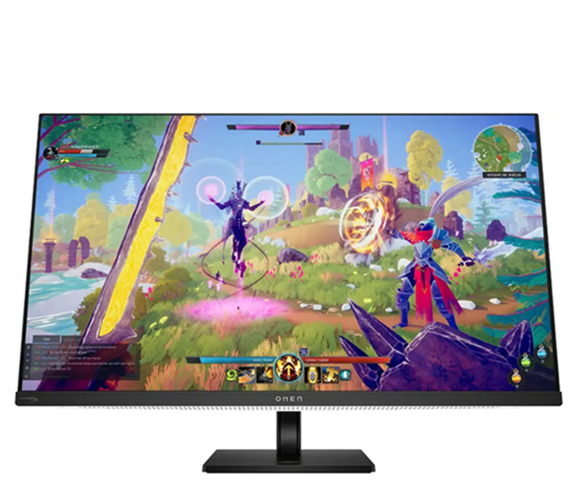
Beyond those fundamentals, the PG27UCDM supports up to a 240 Hz refresh rate at 4K resolution and boasts a 0.03 ms response time. The 10-bit panel also supports Dolby Vision, which is still not commonplace in the market. You’ll find excellent video processing along with support for Nvidia G-Sync and AMD FreeSync Premium Pro.
Not only does the PG27UCDM feature a premium design with high-quality materials used throughout, but it also boasts RGB lighting around the unit to enhance its visual appeal. An ROG logo also projects beneath the monitor to illuminate your desk. As for connectivity, you’ll find two HDMI 2.1 ports, one DisplayPort 2.1 connector, and a USB-C port (with DisplayPort compatibility).

When it comes to actual performance, the PG27UCDM is truly impressive. Input lag is among the lowest in its class, and maximum brightness also topped all competitors (445.76 nits).
The PG27UCDM isn’t cheap, as it carries a manufacturer’s suggested retail price (MSRP) of $1,199.99. But given its class-leading performance, excellent build quality, and terrific image quality, it’s a price well worth paying.
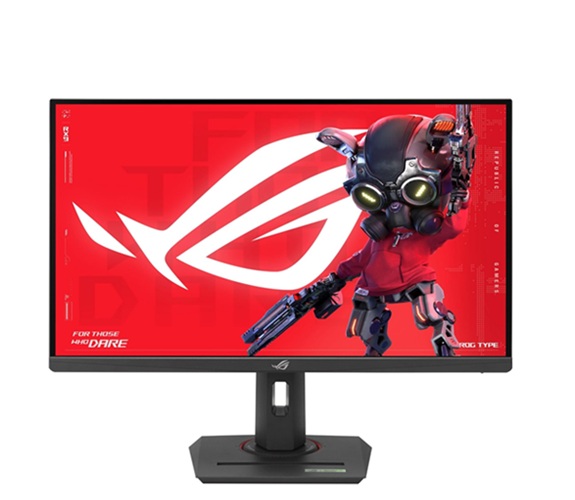
Cooler Masteris ramping up its gaming monitor portfolio, and the latest from the company is the impressive Tempest GP27U. The is on the smaller side for a 4K gaming monitor at 27 inches, but it brings a lot of features to the table along with excellent performance.
The headlining feature of the monitor is its Mini LED panel with a Quantum Dot film and 576 dimming zones. The result is an expansive color gamut and excellent image quality across the board. Of course, you’ll need to calibrate the Tempest GP27U to get the best performance, but once everything is dialed in, it impresses with deep blacks and overall color performance compared to its peers. On top of that, Cooler Master has thrown in support for up to 160 Hz refresh rates, although you can’t use Adaptive-Sync above 144 Hz.

The GP27U excelled in our input lag test, edging out the Samsung Odyssey G8 by 2ms. Although the G8 returned the favor by beating out the GP27U in overall response time (by 2ms), the latter performed well given its 160Hz refresh rate.
“Though the Samsung monitor’s 240 Hz refresh rate gives it a faster draw time, the Cooler Master has extremely low input lag, making up the difference,” we wrote in our review. “My gaming skills are insufficient to see a difference while playing, and the Samsung looks smoother when running over 200fps. But professional-level gamers may gain an advantage from the GP27U’s lower lag.”
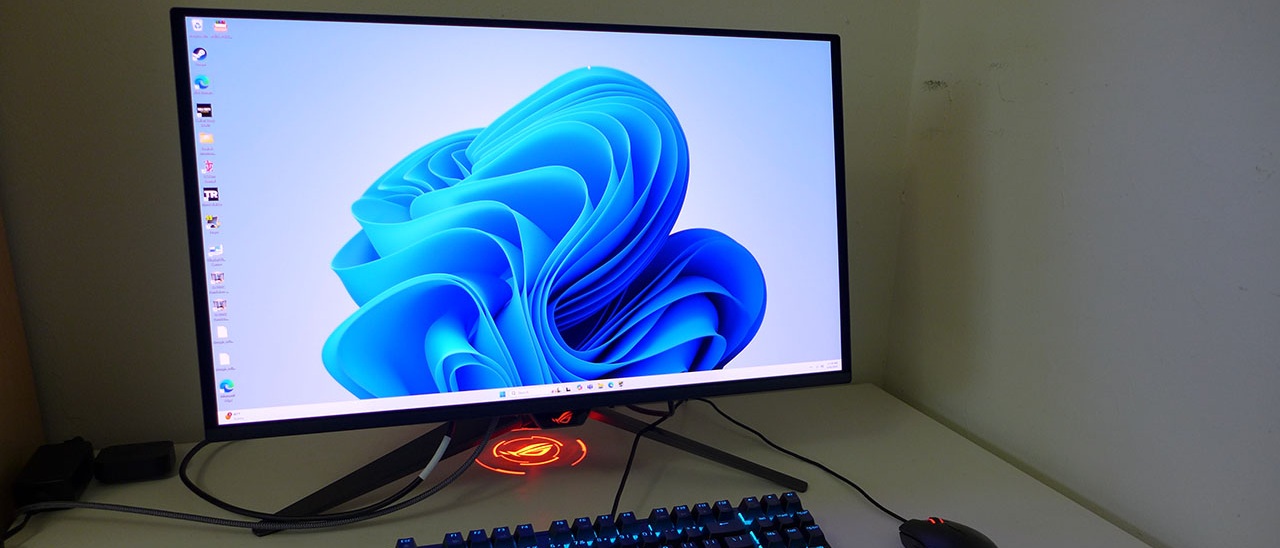
The Cooler Master Tempest GP27U has loads of accolades on its plate and very few demerits of consequence. Throw in a relatively affordable price of $849, and you have a winning combination for gamers.
With OLED technology invading every corner of the gaming monitor market, we’re beginning to see a wealth of options at various price points to appease enthusiasts. With that in mind, Hewlett-Packard aims at the higher end of the market with the Omen 32 OLED.
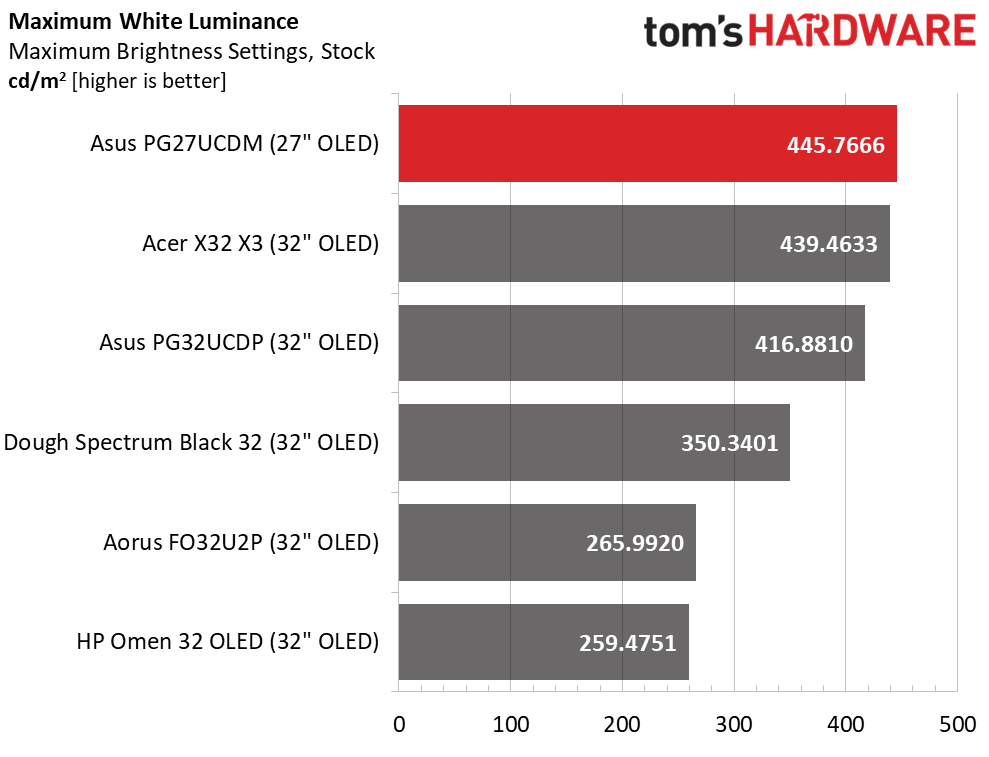
The Omen 32 OLED is built around a 32-inch QD-OLED panel with a maximum 240 Hz refresh rate at 3840 x 2160 resolution. As you would expect, there’s native support for AMD FreeSync Premium Pro and Nvidia G-Sync. HP also has given the Omen 32 OLED a sleek exterior with thin bezels all around (although the bottom bezel is a bit thicker than the other three sides).
But the Omen 32 OLED is more than just a pretty face. Regarding video inputs, there are two HDMI 2.1 ports, one DisplayPort 1.4 port, and one USB-C (DisplayPort Alt-Mode) port. It also has rather thorough KVM functionality complete with two USB-C and and three USB-A ports.
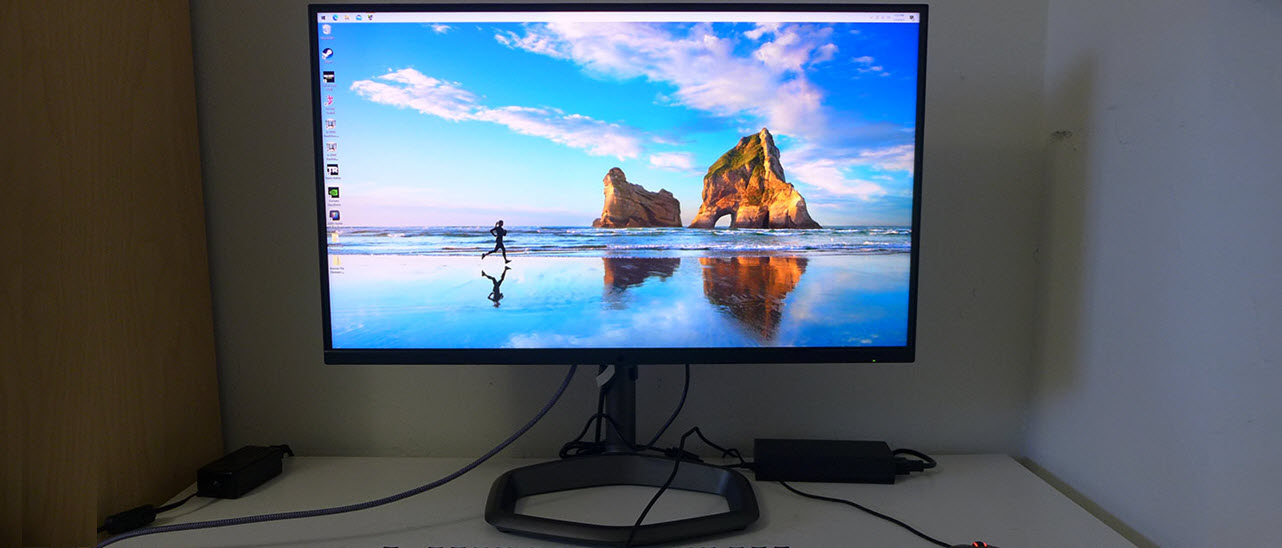
On the performance front, the Omen 32 OLED also impresses. We measured a 4 ms response time at 240 Hz, putting it right in line with other 240 Hz gaming monitors in our testing database. Input lag was also slightly ahead of the 240 Hz competition at 18 ms. It can’t match the 10 ms of the 360 Hz Philips 27M2N8500, but we didn’t expect it to.
Given all the goodies that HP packs into the Omen 32 OLED, it doesn’t come cheap. The MSRP for the monitor is $1,299, which is several hundred dollars more expensive than competitors like theAcer Predator X32 X3($899). However, with features and color performance that caters to both professionals and gamers alike, it’s a high price that’s worth paying.
The Asus ROG Swift OLED PG32UCDP is another dual-mode monitor on our list. However, whereas Alienware AW2725QF is smaller and more attractively priced, the PG32UCDP steps up to the larger and more popular 32-inch segment. More importantly, the PG32UCDP opts for an OLED panel, which pays dividends in overall responsiveness and color reproduction.
The PG32UCDP features a 1080p mode allowing the panel to refresh up to 480Hz. However, you’re able to quickly switch to 4K mode, allowing refresh rates up to 240Hz. Of course, you also get AMD FreeSync and Nvidia G-Sync compatibility, and we witnessed consistently high frame rates without any motion blur.
As we wrote, the PG32UCDP has a premium aesthetic, which uses a combination of metal and plastic. It’s a highly ergonomic design that also comes with the usual assortment of HDMI and DisplayPort connections. You even get USB hookups along with a KVM to support multiple PCs. And, of course, we can’t forget the ROG logo which projects onto your desk for some added visual flair.
We found the response and total input lag to be class-competitive with other 240Hz monitors, while its 480Hz performance was unmatched. “History is made here with the PG32UCDP’s 480 Hz scores,” we said in our review. “The draw time for a full white field is 2ms, and the total lag is 11ms. These are the fastest results I’ve ever recorded for any monitor over the past 12 years. Granted, the resolution is FHD, but the smoothness here is incredible.”
The PG32UCDP knocks it out of the park on so many levels, but be prepared to pay for that luxury. It currently has a street price of around $1,200.
With the monitor industry quickly transitioning to OLED panels that offer ultra-fast response, excellent contrast, and vibrant colors, it’s often easy to lose sight of more value-conscious offerings that appeal to a larger audience.
Such is the case with the Asus ROG Strix XG27UCS, which features an IPS panel and a 4K resolution. While many 4K OLED monitors can cost upwards of $800, the XG27UCS carries a sub-$500 street price.
It’s impossible to be all things to all people, but the XG27UCS comes close to hitting that mark. The XG27UCS is a 27-inch monitor, meaning that it should be small enough not to overpower smaller desks. It also features a 4K resolution, providing a dense 163 pixels per inch, compared to the 138 ppi found on 32-inch 4K panels.
With its lower price point, you’re able to’t expect to bounce up against the 240 Hz refresh rate limit. Instead, the XG27UCS is limited to 160 Hz. But you do get excellent color accuracy without additional calibration and very sharp image quality, thanks to the high pixel density. Asus has also managed to incorporate a backlight strobe that can be enabled simultaneously with Adaptive-Sync (AMD FreeSync and Nvidia G-Sync are supported).
To reach the lower price point, you won’t find superfluous details like RGB lighting or outrageous design elements. On a more functional level, there are no speakers or USB ports, which may be something you would want in a gaming monitor.
The XG27UCS was among the best in its class in terms of response time, at 6 ms. Although 6 ms should be sufficient to quell most motion blur, the monitor also employs a comprehensive overdrive to not only tackle blur but also any stray artifacts.
Given a street price of around $470, the XG27UCS represents a remarkable bargain for gamers who don’t want to drop a few hundred bucks more on an OLED panel.
For hardcore console gamers who want to have the best display performance available, there are plenty of options available. However, one that really stands out from the crowd is the Alienware AW3225QF, which is a 32-inch monitor with a 4K resolution, 240 Hz refresh rate, and a brilliant QD-OLED panel. If you own an Xbox Series S/X or PlayStation 5 console, it doesn’t get much better than this.
The monitor supports Dolby Vision on the Xbox Series X and ranks near the top of its class in most categories. Throw in excellent motion resolution and low input lag, and the Alienware AW3225QF is a boon not only to console gamers but also to those of us who prefer PC gaming.
Although you can’t make full use of the 240 Hz refresh on today’s Xbox and PlayStation consoles, PC gamers are in luck. “The AW3225QF has Display Stream Compression for its DisplayPort 1.4 input and in my tests, I could sustain 240fps in 4K atDoom Eternal’smax detail setting,” wrote our Christian Eberle. “The difference in motion resolution between this and 120fps is visibly significant. The higher frame rate also affords lower input lag. The AW3225QF manages that feat as well.”
$1,200 is not a small sum by any means for a gaming mointor, but the Alienware AW3225QF is well worth the price of entry.
Read:Alienware AW3225QF Review
Quick Shopping Tips
When seeking the best 4K gaming monitor for you, consider the following:
For more guidance picking a monitor of any resolution–gaming or otherwise–check out ourPC Monitor Buying Guideand list of theBest Computer Monitors.
MORE:All Monitor Content
MORE:HDMI vs. DisplayPort: Which Is Better For Gaming?
Get Tom’s Hardware’s best news and in-depth reviews, straight to your inbox.
Christian Eberle is a Contributing Editor for Tom’s Hardware US. He’s a veteran reviewer of A/V equipment, specializing in monitors. Christian began his obsession with tech when he built his first PC in 1991, a 286 running DOS 3.0 at a blazing 12MHz. In 2006, he undertook training from the Imaging Science Foundation in video calibration and testing and thus started a passion for precise imaging that persists to this day. He is also a professional musician with a degree from the New England Conservatory as a classical bassoonist which he used to good effect as a performer with the West Point Army Band from 1987 to 2013. He enjoys watching movies and listening to high-end audio in his custom-built home theater and can be seen riding trails near his home on a race-ready ICE VTX recumbent trike. Christian enjoys the endless summer in Florida where he lives with his wife and Chihuahua and plays with orchestras around the state.